The full opening ceremonies won’t be broadcast here until tonight (because NBC wants a prime-time audience for its $894 million investment), but the early photos are stunning. Absolutely beautiful, absolutely grand.
In the West the pre-Olympics story has been all about fear and condescension. Bracing for things to go wrong, we yell gotcha at China’s polluted skies and await the protests and the riot-gear soldiers; even our benighted president met with dissidents and publicly scolded the Chinese government over human rights. Repeat: George W. Bush criticized another nation about rights.
But China has been working hard to introduce a new, modern face, and it is doing so — boldly and with the kind of coordinated vision that simply is not possible in fragmented Western societies. China has hired some of the world’s leading architects and given them wide latitude to experiment. With bottomless labor resources the whole thing has been built pretty much from scratch in just a few years.
(I’m reminded of something I saw in Beijing last year. I was staying in a hutong hotel off a busy street, and one night my cabbie had to drop me halfway down the block; the rest of the road was swarming with a huge construction crew, under a cloud of steam and tar fumes. The next morning the road was open, and newly paved along one side. When I came back the next night it was under construction again; by morning, the other side had been paved.)
I’m amazed by the scale and unity of the Chinese displays at the opening ceremonies, and their almost classical sense of beauty and proportion. The idea, in scene after scene, is the harmony of the multitude, which in visual form means repetition of geometric shapes:
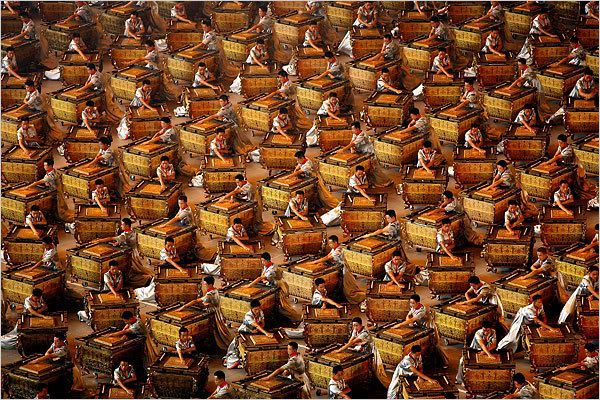
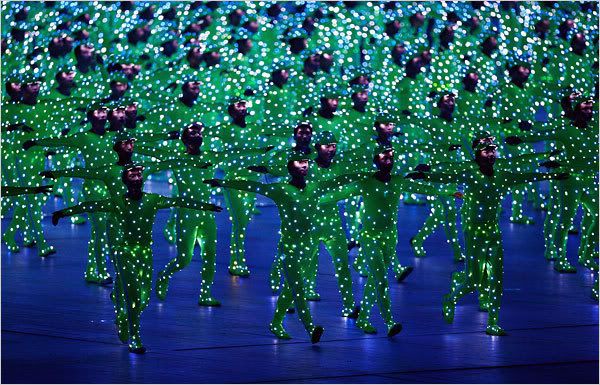
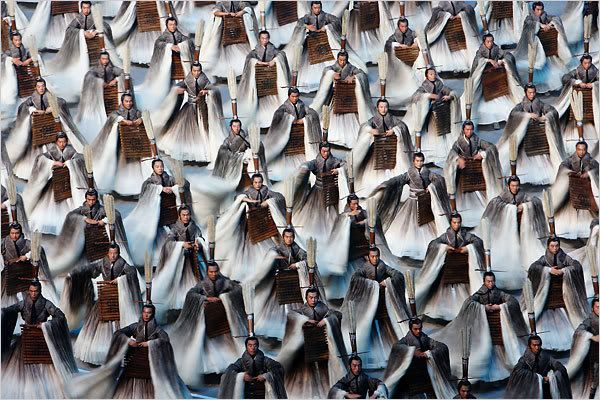
Somehow I can’t imagine a Western nation doing this. We have big cheerleader formations and other one-out-of-many stadium dances, but I think the theme there is noise, not harmony. And the shapes on display in Beijing absorb the individual to a greater degree. Maybe as a consequence, crowd dances have never been so gorgeous.
The other visual theme is the might and size of the state:

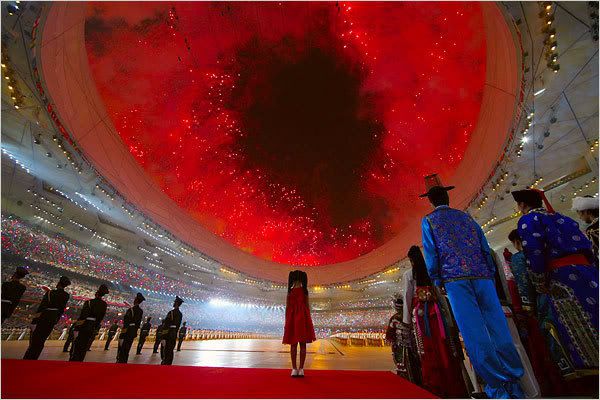
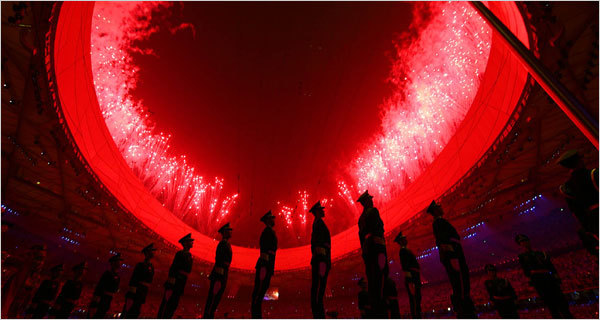
(Photos from NYT.)
The political message is clear enough: China is big, strong, healthy and united. But it also says something about the power of all-powerful governments to create great, or at least massive, art. Steven Heller’s new book, Iron Fists: Branding the 20th-Century Totalitarian State, looks at propaganda in Nazi Germany, fascist Italy and Communist China and Russia. We view a lot of this art as kitsch now. But the architecture, poster design and typography in those societies were in many cases the most advanced of their era; the Soviet absorption of the post-World War I Russian avant-garde, for example, is well known. We also tend to view this in terms of the psychology of propaganda, its ability to manipulate.

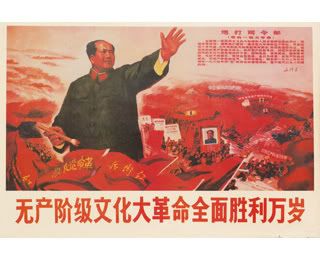
But what about the simple fact of the state’s ability to sponsor and create powerful, original art? That art would not have happened in a democratic, marketplace society. The Romans are the model for this. They ruled with the first iron fist; they also created the first great public artworks of our civilization. The design may have come from Greece and Egypt, but Rome branded it and stamped it all over the known world. Which was basically military policy made artistic policy. That’s Leni Riefenstahl, too, and Beijing 2008.
What strikes me about the ceremony in Beijing is that only a state with total control could do what has been done there. It’s an ugly thing in political terms. But it’s an artistic triumph.
More later ...


No comments:
Post a Comment